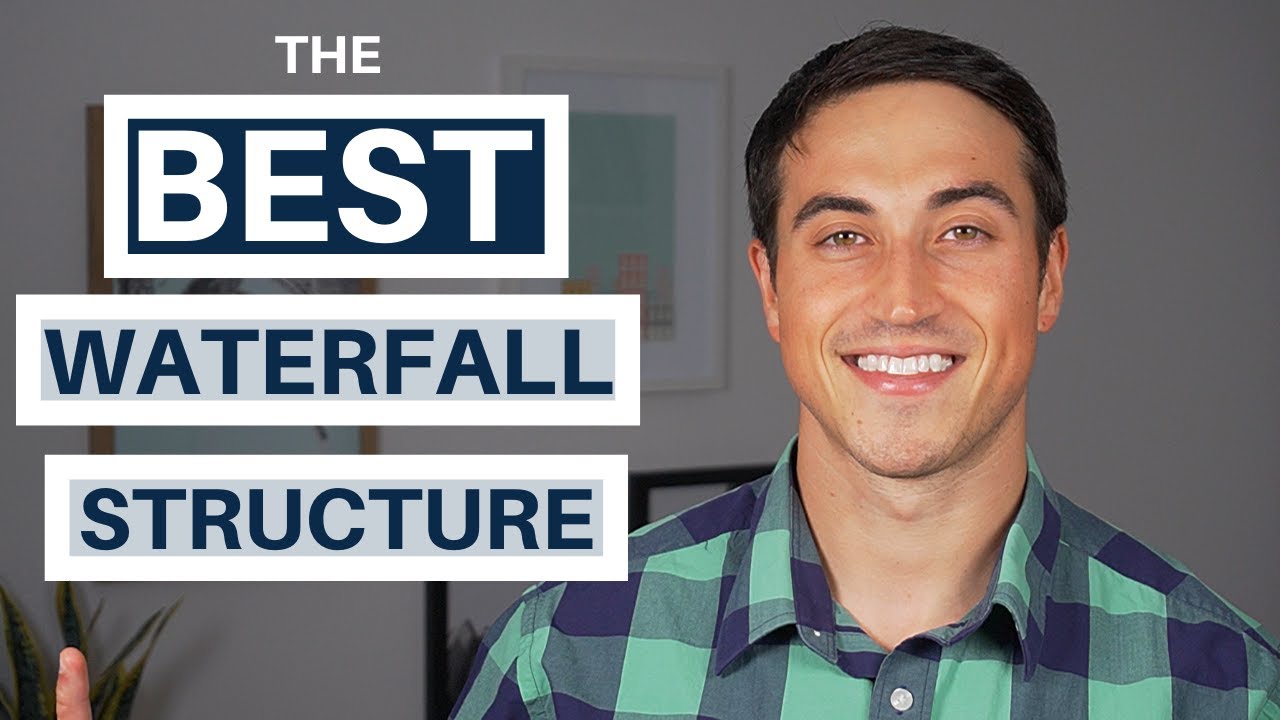
The Best Real Estate Equity Waterfall Structure – How To Pick a Winner

Equity waterfall structures present a huge opportunity for real estate investors who raise equity from third-party investors to significantly increase returns on their real estate investments.
But as profitable as this can be, choosing the right structure for your specific deal or investor base isn’t always as straightforward as it might seem, and this process can start to get pretty confusing with so many different options to choose from and so many factors to consider.
So, to help you get a little bit more clarity on the process if you’re trying to understand how you want to structure your first (or next) deal, this article will break down three things to consider to make sure you’re choosing the best equity waterfall structure for you and your investors, and how to create a “win-win” scenario for everyone involved in the deal.
If video is more your thing, you can watch the video version of this article here.
What Is a Real Estate Equity Waterfall Structure?
Since you’re reading an article about the “best” equity waterfall structure, I’m assuming you have a general understanding of how real estate equity waterfall structures work (if not, this video sums the concept up in about 10 minutes).
To summarize quickly, a real estate equity waterfall structure determines how cash flows are split within a real estate partnership.
In short, if certain return hurdles are hit, the General Partner (or Managing Partner on the deal) will receive a greater portion of the cash flows in proportion to their equity invested when the deal was initially acquired, also known as promoted interest.
On the surface, this can sound like a great deal for the General Partner. And in most cases, this is true – the General Partner is compensated for the work they’re doing by putting the deal together, and has the potential for even more compensation if they exceed investor return expectations.
However, what those return hurdles are (and how they’re calculated) can vary a lot from deal to deal.
And if you’re doing your first transaction with investors, it can feel pretty overwhelming to choose exactly which structure is right for you, the deal you’re doing, and your investor base, too.
So, in this article, let’s walk through three ways to choose the best waterfall structure for you and your unique situation, based on all the factors you need to consider when putting together a deal.
Make The Equity Waterfall Structure Easy To Understand
First and foremost, the first thing I’d recommend when choosing an equity waterfall structure is to make that structure is simple and easy to understand, especially if you’re doing smaller deals and working with non-institutional capital partners.
Many individuals who are investing passively in real estate deals don’t have a firm understanding of all of the different intricacies of partnership structures or commercial real estate finance in general, and the more complex you make things, the more likely that you’re going to scare away would-be investors.

We’re living in a time where investors have more information and awareness than ever. With Ponzi schemes and complex fee-laden investment vehicles giving investment managers a pretty bad reputation today, if investors don’t understand something within an investment structure, they’re probably just not going to invest with you at all.
This means that while it might sound impressive to add things clawback or catch-up provisions into the agreement, clauses like these are also going to make it much harder for most individual investors to grasp what is actually going on with the cash flows and how their own personal returns are going to be affected.
When you get into big transactions with one or more sophisticated, institutional capital partners and you’re trying to make a deal work, this is where some additional complexity might make sense. But if you’re looking to raise $25,000 to $100,000 checks from friends, family, and other high net worth individuals outside of the industry, simpler is generally much, much better.
Make Sure The Equity Waterfall Structure Aligns Incentives
Aside from keeping things simple, you also want to make sure that your waterfall structure helps you and your investors accomplish your investment goals.
And with that, the second thing I’d recommend when choosing a waterfall structure is to make sure the structure incentivizes the General Partner to make decisions that align with investor goals of investing in the property in the first place.
How This Works in Practice
For example, if you and your investors are acquiring a property with the goal to generate cash flow and hold the property indefinitely, the equity waterfall structure should incentivize the General Partner to accomplish that goal.
In this scenario, something like a cash-on-cash-based structure would reward the sponsor for holding the property long-term and taking actions to increase cash flow and investor distributions, which directly represents the interests of all parties involved with the deal.

If that same group of investors is acquiring a property to make a short-term profit and to recycle capital quickly, something like an IRR-based structure would incentivize the General Partner to add value, sell the property, and generate a profit in a short period of time.
And if that same group of investors is looking for long-term appreciation potential and wealth preservation, something like an equity multiple-based structure might work well to incentivize the General Partner to generate cash flow for many years to come, and to wait out a sale until a significant gain can be made.
These structures can also be mixed and matched, meaning that you can have a waterfall structure with IRR and equity multiple hurdles, or cash-on-cash hurdles and a separate cash flow split upon sale, or any other combination that keeps the original intent of the real estate investment in the forefront when the General Partner is making investment decisions.
Real estate investment strategies can always change over time to adapt to market conditions, but if you go into a deal with a structure that aligns General Partner compensation with the investment goals of the partnership as a whole, decision-making becomes a lot easier (and more beneficial) for all parties involved.
Make Sure The Equity Waterfall Structure Aligns With Current Market Rates
Finally, aside from your terms being simple and your interests being aligned with investors, the final thing I’d recommend here is to make sure that, whatever type of structure you’re using, the your equity waterfall terms are set at market rates.
Like we talked about earlier in this article, real estate investors who want to invest passively have more options than ever right now.
And with that, this also means that they have more information than ever on what they should expect to be giving up from a cash flow perspective, and what they shouldn’t.
Real estate investing continues to gain popularity as an alternative investment vehicle, and crowdfunding platforms like RealtyMogul and CrowdStreet are making it easy for passive investors to not only have other options, but also to see what market terms are for similar partnership deals.

When building an investor base, other firms can copy your strategy or compete with you in your target markets, and there’s not much you can do about that. But an asset that can’t be duplicated is investor trust, which takes a very long time to build, and very little time to lose.
If you can’t back up the structure you’re proposing, my recommendation is to adjust it until you can.
Even though you might catch some unsuspecting investors in the short-term, this is a really short-sighted strategy. And if you want to be in this for the long-game, this type of behavior is going to lead to your investor base dwindling over time as those investors become aware of less costly, similar investment options.
The Importance of Fair Fee & Waterfall Structures
If an investor has $100,000 they want to put into real estate each year, that might mean they’re only investing in one or two deals on an annual basis.
And if you’re doing deals similar to other firms (just using a more dilutive partnership structure), that $100K is likely going to go with your competitor rather than with you.
This is extremely true in my own experience as a Limited Partner investor, as an investor that partners with multiple different groups to invest passively in real estate deals.
When I’m taking a look at a deal from a new sponsor, the fee and waterfall structure is one of the first things I look at, and these things matter. A lot.
I’ve passed on quite a few opportunities in the past because I knew I could get the same type of investment exposure with another equally as qualified team, but with a lighter fee and waterfall structure in the process.
The Bottom Line
An equity waterfall structure is intended to reward a General Partner for exceeding investor expectations on a deal, or exceeding what those investors would have otherwise been able to achieve in another investment vehicle of similar risk.

If I’m a passive investor, I don’t want the sponsor to take a portion of my cash flows for producing mediocre investment results that I could have achieved elsewhere with less risk, more liquidity, or a mixture of the two.
And overall, a waterfall structure that is simple, tailored towards investor goals, and structured at fair, market rates is going to be your best bet to attract investor capital long-term, and to create a win-win scenario for both for both the General Partner and the Limited Partners on a deal.
How To Build a Real Estate Equity Waterfall Model
If you’re looking to raise capital right now and want to see how different waterfall structures will affect your cash flows and how to model those in Excel, make sure to check out The Real Estate Equity Waterfall Modeling Master Class and The Advanced Real Estate Equity Waterfall Modeling Master Class on our Courses page.
These courses walk through many of the different structures we talked about in this article, including IRR-based waterfall modeling, cash-on-cash based waterfall modeling, or building out waterfall models based on multiple different return hurdles like the IRR and equity multiple before any promoted interest is earned.
And if you want access to these courses and all other Break Into CRE courses on real estate financial modeling and analysis, make sure to check out Break Into CRE Academy – you can check out all the details of enrollment here.
I hope this was helpful in finding which equity waterfall structure might be best for you and your deal. Good luck!


